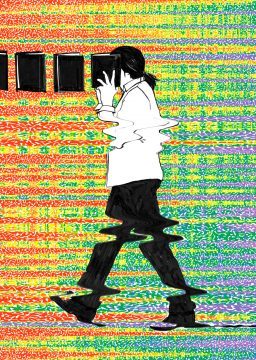Lucy Ives in The Baffler:
 We know a little of what the social novel was. At the very least, we know of Charles Dickens and what the literary historian Louis Cazamian calls that author’s “philosophy of Christmas.” I hope you will laugh a little here, as I think Cazamian is attempting to be at once ironic and precise. Dickens was arguably the first author to bring the urban lower middle class into the European novel as more than scenic decor; reflecting in various ways on his father’s time in debtor’s prison as well as his own stint as a factory laborer during that parent’s absence, Dickens described the precariousness produced by industrialization in generally moving detail—even if Americans are more apt to remember the amusing eccentricities of Tiny Tim and Miss Havisham than the sociological achievement of a work like 1854’s Hard Times, which stands as a sort of anatomy of the imaginary mill town of Coketown. Changes in the British political system and economy during the earlier part of the nineteenth century (expanded suffrage after 1832 and increasing readership of the press) meant that there was an eager audience for fiction that touched upon the organization of society. In the early 1830s, Harriet Martineau, a young, unmarried woman, became the author of a series of bestselling serial parables that explained basic economic concepts such as free trade, via “The Loom and the Lugger,” and unions, via “A Manchester Strike.” Martineau’s Illustrations of Political Economy (1832–34) emerged out of her conviction that the economic and the personal were not separate spheres, and her more than slightly didactic bent was surely influential for the style of serialized novel Dickens would first produce in 1836 with the Pickwick Papers. Dickens’s work built on Romanticism’s convictions regarding the importance of national history to contemporary identity, with the difference that the influence of modern (i.e., mechanized) systems on the individual were explored. In addition, unlike Sir Walter Scott, he of the sweeping national-historical romance, Dickens dealt unabashedly in coincidence, cuteness, and sentimentality—apparently hoping to motivate readers to philanthropic attitudes and works through minor styles of depiction designed to inspire pity.
We know a little of what the social novel was. At the very least, we know of Charles Dickens and what the literary historian Louis Cazamian calls that author’s “philosophy of Christmas.” I hope you will laugh a little here, as I think Cazamian is attempting to be at once ironic and precise. Dickens was arguably the first author to bring the urban lower middle class into the European novel as more than scenic decor; reflecting in various ways on his father’s time in debtor’s prison as well as his own stint as a factory laborer during that parent’s absence, Dickens described the precariousness produced by industrialization in generally moving detail—even if Americans are more apt to remember the amusing eccentricities of Tiny Tim and Miss Havisham than the sociological achievement of a work like 1854’s Hard Times, which stands as a sort of anatomy of the imaginary mill town of Coketown. Changes in the British political system and economy during the earlier part of the nineteenth century (expanded suffrage after 1832 and increasing readership of the press) meant that there was an eager audience for fiction that touched upon the organization of society. In the early 1830s, Harriet Martineau, a young, unmarried woman, became the author of a series of bestselling serial parables that explained basic economic concepts such as free trade, via “The Loom and the Lugger,” and unions, via “A Manchester Strike.” Martineau’s Illustrations of Political Economy (1832–34) emerged out of her conviction that the economic and the personal were not separate spheres, and her more than slightly didactic bent was surely influential for the style of serialized novel Dickens would first produce in 1836 with the Pickwick Papers. Dickens’s work built on Romanticism’s convictions regarding the importance of national history to contemporary identity, with the difference that the influence of modern (i.e., mechanized) systems on the individual were explored. In addition, unlike Sir Walter Scott, he of the sweeping national-historical romance, Dickens dealt unabashedly in coincidence, cuteness, and sentimentality—apparently hoping to motivate readers to philanthropic attitudes and works through minor styles of depiction designed to inspire pity.
It is worth underlining the strategies Dickens used to depict the social world, because even as his novels are among the most familiar to us out of the nineteenth-century Anglophone pantheon (try Googling “Scrooge McDuck merchandise”), their style seems, the contemporary American liberal maintains, anathema to what is valuable and appropriate in politicized art. The cool methods of the French realist novel have somehow won out, and we are inclined to side with Gustave Flaubert when he criticizes the pious deaths of children in that problematic American novel of persuasion, Uncle Tom’s Cabin, itself surely a Dickensian attempt and also notable as the best-selling novel of its century.
More here.
